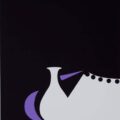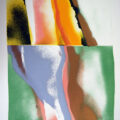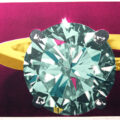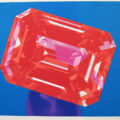Calder was the most acclaimed and influential sculptor of his time. Born in a family of celebrated, though more classically trained artists, Calder utilized his innovative genius to profoundly change the course of modern art. He began by developing a new method of sculpting: by bending and twisting wire, he essentially “drew” three-dimensional figures in space. He is renowned for the invention of the mobile, whose suspended, abstract elements move and balance in changing harmony. Calder also devoted himself to making.
RÉSUMÉ:
Early Years: 1898-1930
Born in Pennsylvania in 1898, Alexander Calder created works of art throughout his childhood. After graduating from the Stevens Institute of Technology and briefly considering an engineering career, Calder became a professional artist in his early twenties. He moved to New York and attended classes at the Art Students League while working concurrently as an illustrator for the National Police Gazette. A series of the Ringling Brothers and Barnum & Bailey Circus was included amongst these illustrations. Soon after moving to Paris in 1926, Calder developed his Cirque Calder, a miniature work of performance art made of wire and found materials. Performances of the Cirque Calder gained Calder introduction to artists in Paris, then the center of the art world. He also invented wire sculpture whereby Calder “drew” in space with wire portraits of friends and personalities of the day. In 1928, he was given his first solo exhibition of these wire sculptures at the Weyhe Gallery in New York.
Abstraction: 1930-1936
Calder made his first wholly abstract works during these crucial years of artistic development. He invented the kinetic sculpture now known as the “mobile.” Coined by Marcel Duchamp, the word refers to both “motion” and “motive” in French. The earliest mobiles moved by a system of cranks and motors, although these mechanics were virtually abandoned as Calder fully developed mobiles that moved freely with the air’s currents. He also created stationary abstract works made of intersecting planes of shapes, which Jean Arp (playing off Duchamp’s term) referred to as “stabiles.” The first of Calder’s outdoor works–predecessors of his later monumental sculpture–were fabricated during this era as well.
The War Years: 1937-1945
Calder’s travels were curtailed by the onslaught of the second World War, yet he remained active throughout its duration. Calder completed Devilfish, his first stabile enlarged from a small model, in 1937. Soon afterwards, he received two important commissions: Mercury Fountain for the Spanish Pavilion at the 1937 Paris World Fair (a work that symbolized Spanish Republican resistance to fascism), and the mobile Lobster Trap and Fish Tail, 1939, which was installed in the main stairwell of the new Museum of Modern Art building in New York. Calder made a series of “constellations;” that is, constructions of delicately carved wood elements affixed to inflexible wires. The George Walter Vincent Smith Gallery of Springfield, Massachusetts held the first retrospective of his work in 1938. Another retrospective followed in 1943 at the Museum of Modern Art, New York. At the time, Calder was the youngest artist ever to whom the Museum had dedicated a full-career survey.
The Prolific Years: 1945-1953
Eager to exhibit again in Europe after the end of World War II, Calder held a major show of his work at Galerie Louis Carré, Paris in 1946. Jean-Paul Sartre wrote a seminal essay on Calder’s work for the exhibition catalogue. In 1948, Calder spent several inspirational weeks in Brazil where he created many works and held two highly successful exhibitions in Rio de Janeiro and São Paulo. International Mobile, made in 1949 for the Philadelphia Museum of Art’s Third International Exhibition of Sculpture, was Calder’s largest mobile to date, at approximately twenty feet high. He designed sets and costumes for a number of theatrical performances. Another important commission was the Aula Magna, a huge acoustic ceiling he designed for the auditorium at Universidad Central de Venezuela.
Late Years: 1953-1976
Calder devoted much of his later working years to commissions he received for public, monumental works. Some of his most important projects include: .125, a mobile hung in John F. Kennedy Airport, New York (forty-five feet high; Teodelapio, for the town of Spoleto, Italy (fifty-eight feet high); Man, for the 1967 exposition in Montreal (sixty-five feet high); El Sol Rojo, for the 1968 Mexico City Olympic Games (eighty feet high); and the first public art work funded by the National Endowment for the Arts, La Grande Vitesse, for Grand Rapids, Michigan (forty-three feet high). He also designed and painted two jets for Braniff Airlines. His two dealers, Galerie Maeght in Paris and Perls Gallery in New York, averaged about one Calder show each per year. Major retrospectives of Calder’s work were held at the Guggenheim Museum in New York (1964), Museum of Fine Arts, Houston (1964), Musée National d’Art Moderne, Paris (1965), the Fondation Maeght in Saint-Paul-de-Vence, France (1969), and the Whitney Museum of American Art, New York (1976). Calder died in New York in 1976, at the age of seventy-eight.
Additional Information:
Born: 1898
Birthplace: Pennsylvania, USA
Died: 1976
Website: HTTP://WWW.CALDER.ORG/SETS/FOUNDATION/FOUNDATION.




